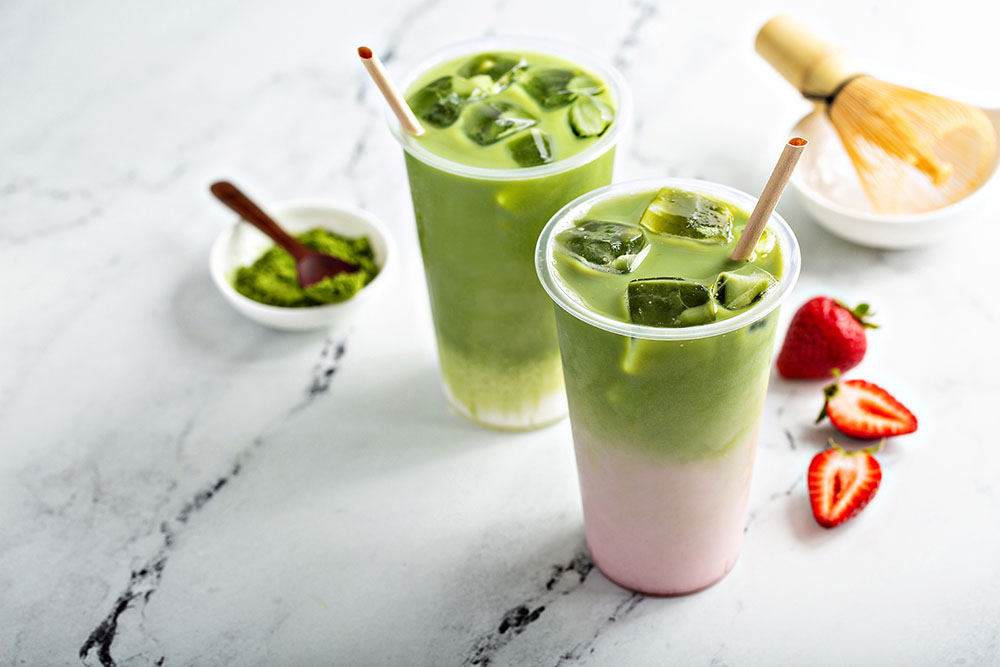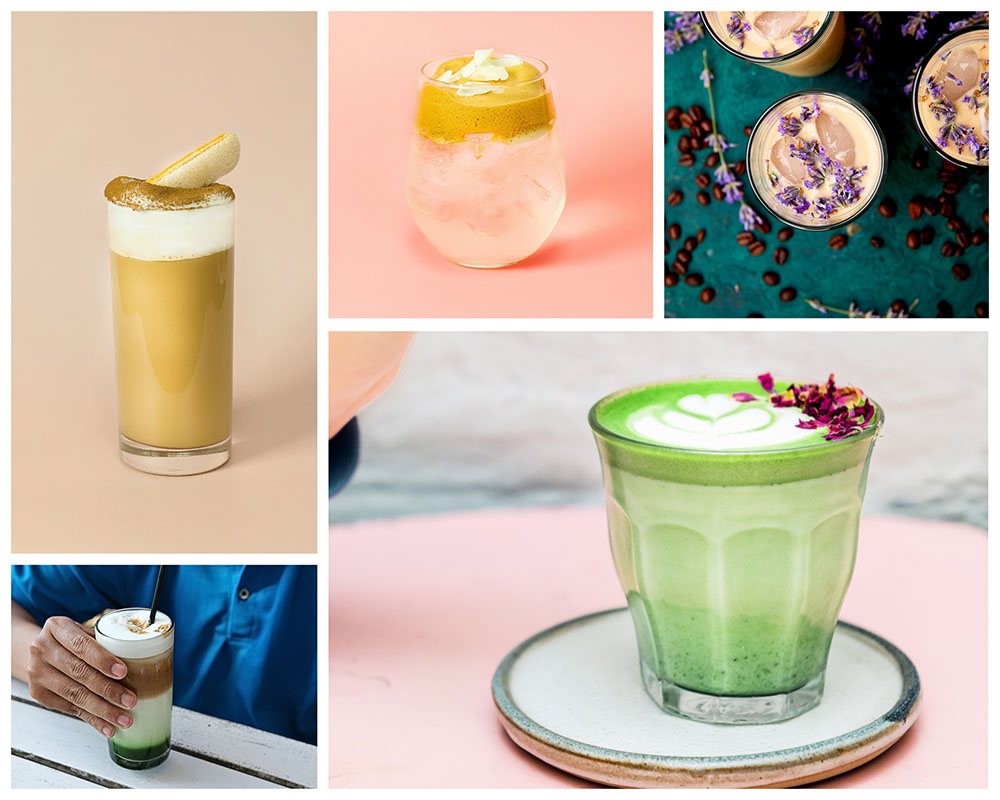5 Biggest coffee trends of 2025
Lily Hedley | June 11, 2025 | 4 minute read

We’ve done the research and compiled all the biggest trends in the coffee world right now. In summary, today’s coffee drinkers expect their caffeine to be green, clean, personalised, environmentally conscious and adventurous in flavour.
2025 is green…
Ironically the biggest coffee trend isn’t coffee! Matcha is set to be the drink of summer 2025, taking over mainstream UK coffee shops and Instagram stories alike. In preparation for summer 2025 you can now find matcha on the menu at Starbucks, Pret A Manger and Caffè Nero.
Its slow-release caffeine and higher nutrient content compared to coffee make it especially popular with younger adults, who are more health-conscious than previous generations.
The coffee drinker of today also expects full traceability. As more retailers share clear information about sourcing, consumers have come to demand the same from all their suppliers. Knowing where coffee comes from, whether it’s the farm, the region or the processing method, is no longer a nice to have. It’s the standard.
A significant majority of coffee consumers say the environmental impact of their brew influences their purchasing decisions. 70 percent of people report considering eco‑factors when choosing coffee.

Trending flavours
For young consumers, who mainly drink iced coffee (especially in the summer), a sweetener is a must. Where you could once only get vanilla or caramel flavour in Starbucks, the majority of coffee shops now offer a variety of flavoured syrups and sweeteners. These are some of the top trending coffee flavours in the UK:
- Lavender
- Pistachio
- Fruits such as cherry and banana
- Rose
- Matcha with fruit puree
- Dessert coffees (tiramisu, crème brûlée etc.)
- Miso combined with caramel or brown sugar
- Coconut water

Supplier-grower relationships
Increasingly, coffee suppliers are stepping away from third-party certifications in favour of direct trade relationships.
Companies like Pact Coffee and Grind (and FreshGround) work directly with farmers, cutting out intermediaries and ensuring a greater share of profit goes back to the growers. By building these direct partnerships, they can focus on quality, pay higher prices, and support long-term sustainability without relying on certification labels.
Customer-experience coffee trends
Experiential trends in coffee are reshaping how consumers engage with their favourite drinks. Smart technology is playing a growing role in coffee service, with tablets and self-service screens becoming a familiar sight in cafés.
This not only streamlines the ordering process but also allows customers to customise their drinks more easily and explore new options at their own pace.
![[IMAGE DESCRIPTION GOES HERE]](https://freshground.co.uk/wp-content/uploads/2025/06/coffee-tablet-1.jpg)
Visual menus are also gaining traction. They enhance the customer experience by showcasing enticing photos and detailed descriptions of drinks and snacks. This makes decision-making simpler and encourages experimentation, particularly for those who might be new to specialty coffee.
Inspired by the success of bubble tea, some coffee shops are introducing build-your-own experiences.
Customers can personalise everything from the coffee base and milk options to flavour shots and toppings, creating a unique drink tailored exactly to their preferences. This interactive approach appeals especially to younger, adventurous consumers who value creativity and control in their beverage choices.
Coffee product trends
Without a doubt the fastest growing trend in coffee is ‘functionality’. Consumers want products with health benefits, and want to find ways to incorporate them into their pre-existing routine.
‘Functional coffee’ is coffee that has been enhanced with beneficial nutrients, vitamins or other ingredients. This is a result of increasing consumer demand for nutrient-rich food and drink options.
Grocery retailers have reported shopper’s demand for “high-protein” options has increased over 100% since the previous year.
![[IMAGE DESCRIPTION GOES HERE]](https://freshground.co.uk/wp-content/uploads/2025/06/mushroom-coffee.jpg)
A specific and growing segment within functional coffee is mushroom coffee. It incorporates various medicinal mushrooms like lion’s mane, reishi, and cordyceps. All of which are believed to offer cognitive, immune, or stress-reducing benefits. These are mainly sold by specialist online retailers, though they are popping up on menus across the country.
Ready-to-drink (RTD) coffee products are becoming more popular and brands are starting to diversify their product range to meet the demand.
Making your own coffee at home has been trendy for sometime, thanks to #CoffeeTok. More RTD coffee ingredients are appearing on shelves every month. Like coffee concentrates and pre-mixed flavoured coffees designed to be made into iced coffee.
Presentational trends
The visual and sensory appeal of coffee is becoming as important as its taste. There is an increasing focus on artistry and unique serving styles.
Clarified coffee is made by a process known as “milk washing” or “fat washing”, which removes solids and impurities from the brew. This results in a remarkably clear liquid, that retains the intricate flavour profile of the coffee.
The clarification process can mellow harsh notes, enhance specific aromatics, and create an incredibly smooth, silky mouthfeel. It transforms coffee into an elegant, visually striking beverage, making it a popular choice in high-end specialty coffee shops.
Drawing inspiration from the world of cocktail bars, coffee mixology is emerging as a trend in independent coffee shops and for influencers. This trend allows baristas to experiment with unique flavour pairings and stunning presentations. It’s all about combining coffee with different, complimentary ingredients, from aromatic syrups and spices to fruit purees, to craft new and unusual coffee drinks.
Another growing trend in coffee presentation is layering. With the rise in flavour experimentation and a stronger focus on aesthetics, it’s clear that visually appealing drinks are winning over consumers. Layering showcases each component of the drink, with contrasting colours adding to its overall appeal.
So, to summarise, the biggest trends for 2025 are (in no particular order):
- Matcha
- Traceable coffee
- Syrups and flavours
- Direct grower-to-supplier relationships
- Self-service touchscreen ordering
- Visual menus
- Customisation
- Functional coffee
- Mushroom coffee
- Ready to drink coffee products for at-home use
- Clarified coffee
- Coffee mixology
- Layering